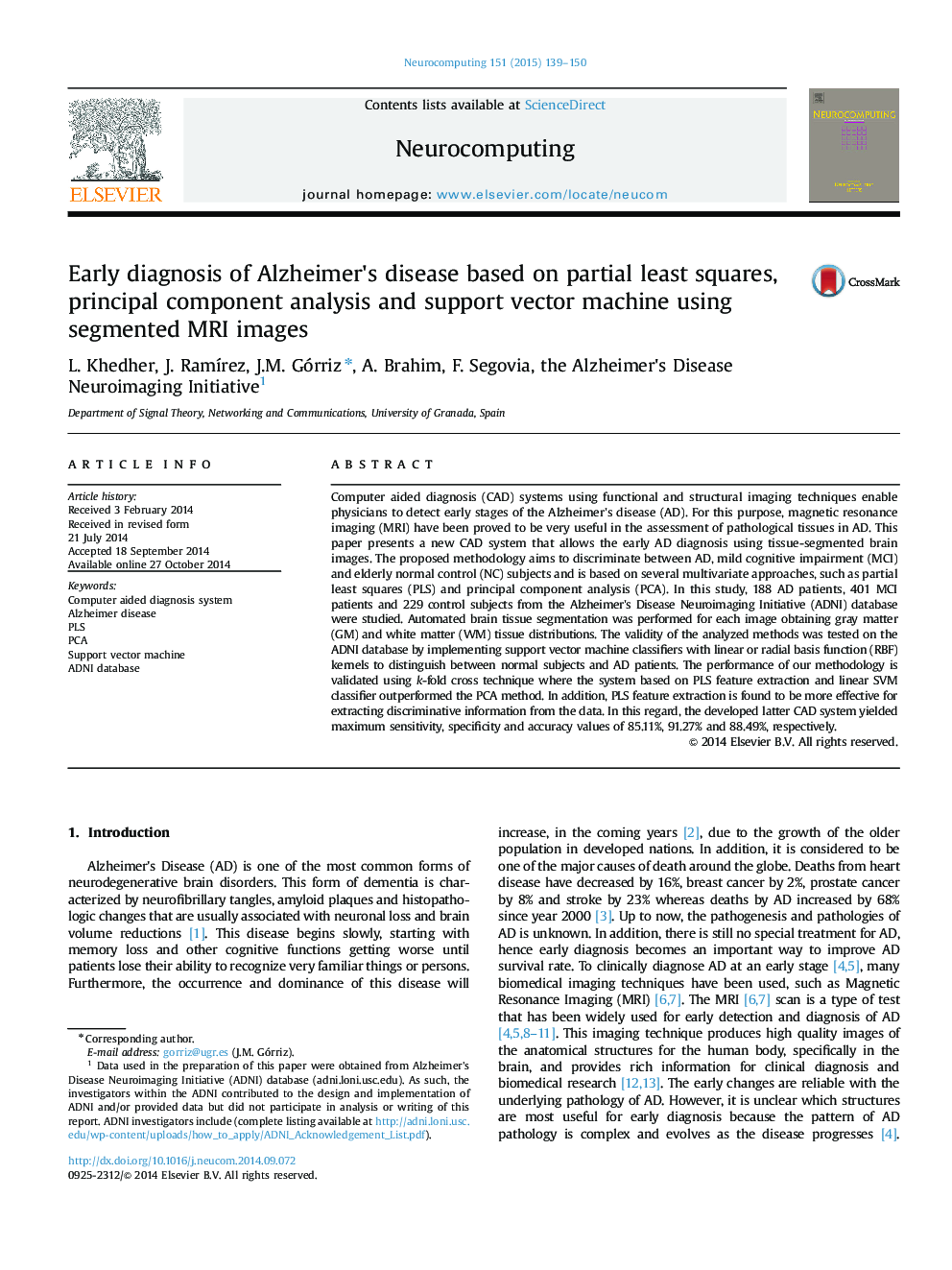| Article ID | Journal | Published Year | Pages | File Type |
|---|---|---|---|---|
| 409699 | Neurocomputing | 2015 | 12 Pages |
Computer aided diagnosis (CAD) systems using functional and structural imaging techniques enable physicians to detect early stages of the Alzheimer׳s disease (AD). For this purpose, magnetic resonance imaging (MRI) have been proved to be very useful in the assessment of pathological tissues in AD. This paper presents a new CAD system that allows the early AD diagnosis using tissue-segmented brain images. The proposed methodology aims to discriminate between AD, mild cognitive impairment (MCI) and elderly normal control (NC) subjects and is based on several multivariate approaches, such as partial least squares (PLS) and principal component analysis (PCA). In this study, 188 AD patients, 401 MCI patients and 229 control subjects from the Alzheimer׳s Disease Neuroimaging Initiative (ADNI) database were studied. Automated brain tissue segmentation was performed for each image obtaining gray matter (GM) and white matter (WM) tissue distributions. The validity of the analyzed methods was tested on the ADNI database by implementing support vector machine classifiers with linear or radial basis function (RBF) kernels to distinguish between normal subjects and AD patients. The performance of our methodology is validated using k-fold cross technique where the system based on PLS feature extraction and linear SVM classifier outperformed the PCA method. In addition, PLS feature extraction is found to be more effective for extracting discriminative information from the data. In this regard, the developed latter CAD system yielded maximum sensitivity, specificity and accuracy values of 85.11%, 91.27% and 88.49%, respectively.
